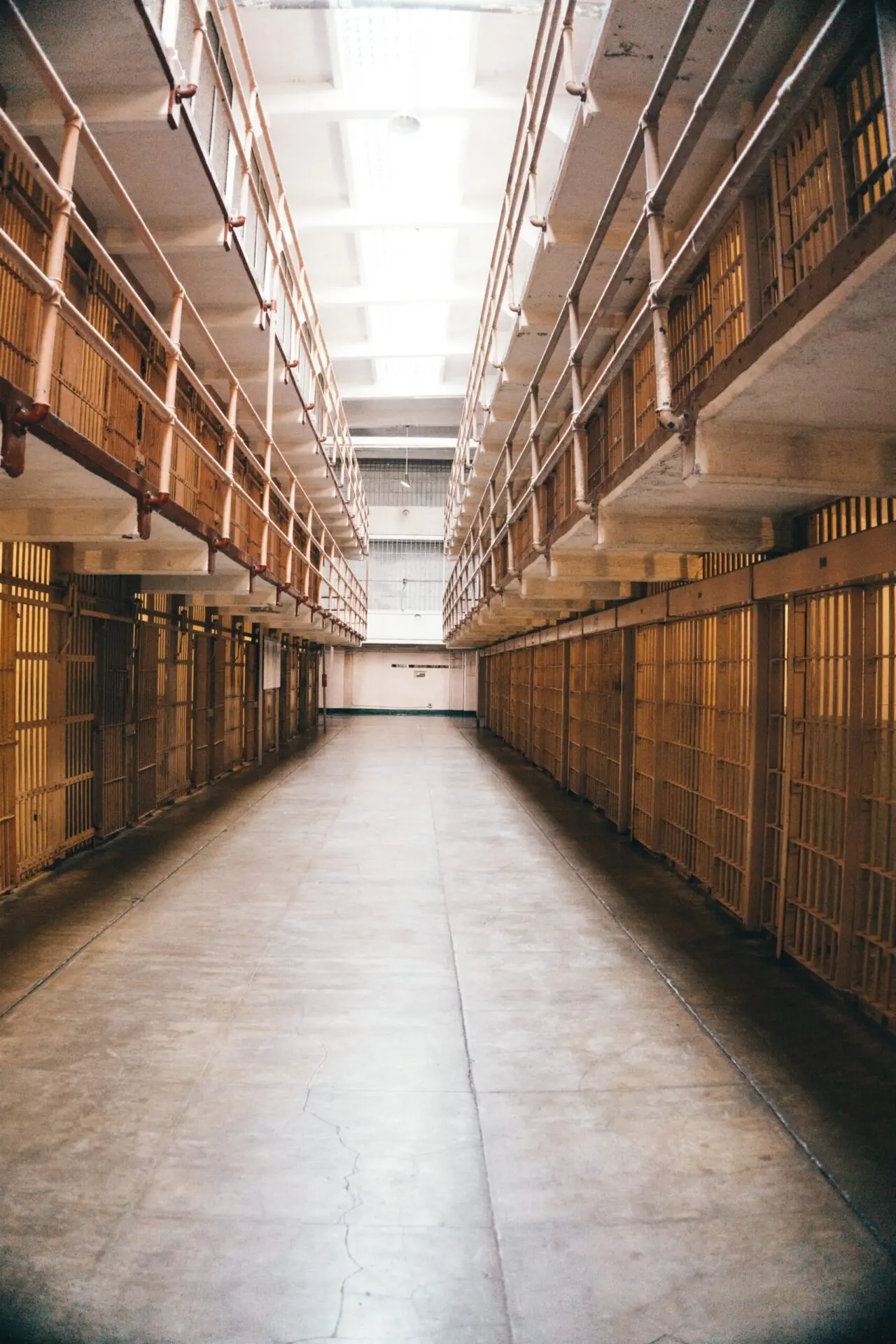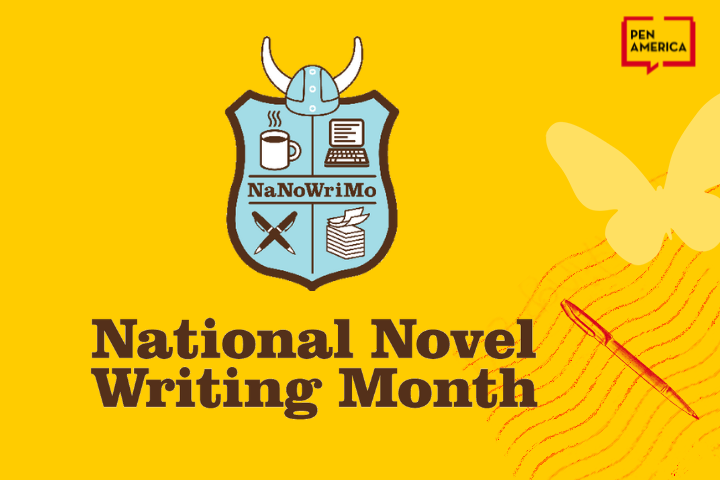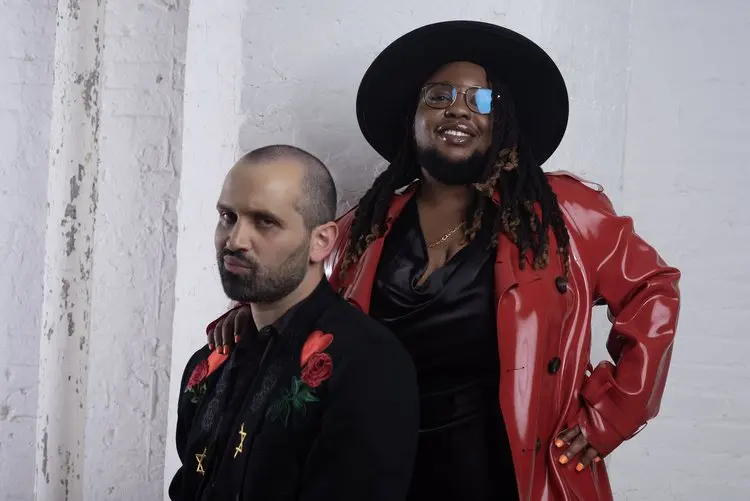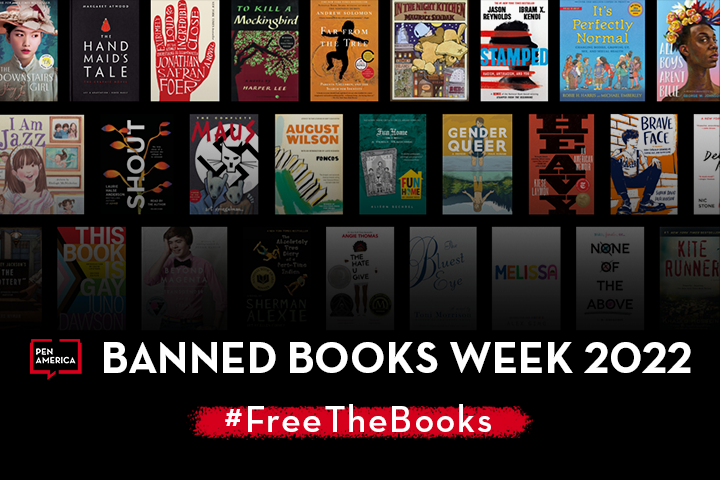
As a cultural fixture of New York City, the Brooklyn Public Library (BPL) is where the curiosity and needs of the Brooklyn community meet the resourcefulness and tenacity of librarians. Trusted by patrons as a proactive community and learning space, BPL’s work entails much more than lending books. It is about facilitating inclusive engagements to meet the various needs of New Yorkers, including those community members who are incarcerated. By providing incarcerated patrons access to virtual telecommunication, library materials, research, and correspondence tools through its Justice Initiatives program, BPL plays a crucial role in helping incarcerated people maintain connections to their loved ones on the outside, improve their literacy skills, and prepare for successful reentry into their communities.
Brooklyn Public Library’s relentless commitment to serve people who are incarcerated transcends its direct services, and can be seen through its collaborative work with various criminal justice nonprofit organizations and programs, such as PEN America’s Prison and Justice Writing Program. In partnership with PEN America, the library hosted Break Out: PEN Prison Writing Awards 2021 virtually, and produced Break Out: Celebrating the 2022 PEN America Prison Writing Award Winners in its Stevan Dweck Center for Contemporary Culture. Produced annually, Break Out is a community-centered event that celebrates the winners of the PEN Prison Writing Awards, which was initiated in the wake of the Attica Prison Riots in the early 1970s. Formerly incarcerated writers and other noted authors, actors, and activists volunteer to read and perform the award-winning work from writers inside prisons across the United States. Most recently, Break Out featured Asia Kate Dillon, Kara Young, Linda La Beija, José Olivarez, Jermaine Archer, Dario Peña, and Tyrone Taylor.
Despite how crucial this work is for communities inside and outside of prisons, libraries across all five New York City boroughs face a collective $36 million in budget cuts. To shine a light on the needs that libraries and librarians help address for people involved with the American carceral system, PEN America Prison and Justice Writing Fellow Valentina Flores spoke with Diego Sandoval-Hernandez, Supervising Librarian for Jail and Prison Librarians at the Brooklyn Public Library, about the history and importance of the Justice Initiatives Program.
Flores: Thank you for taking the time to speak with me. Can you tell us a bit about your journey working with libraries to serve communities? What brought you to the Jail and Prison Services Program?
Sandoval-Hernandez: Thank you for having me. I’ve been a librarian for almost seven years now. I started as an adult services librarian at the Brooklyn Central Library, where most of my job involved helping people with technology and cultivating digital literacy. Working to help people apply for jobs and different social services is what started my involvement with the community. Soon enough, I offered my help to the Jail and Prison Services team at the time, providing book services with them at various jails. It was then that I finally realized the impact, importance, and value of the service I was helping facilitate. Eventually, almost five years ago, I started working directly with the team and have been providing library services at Rikers since.
Flores: Thank you for sharing that. It seems that the library serves patrons who are not only in the borough of Brooklyn. You mentioned Rikers, which is much closer to Queens. Can you speak more about how the library serves incarcerated patrons who have been removed from the community?
Sandoval-Hernandez: I work with Justice Initiatives, a department of Outreach Services at the library. Outreach Services has four sub-departments: older adults, immigrants, health, and justice initiatives. Justice Initiatives began a few years ago with the TeleStory program offering video chat services to incarcerated people on Rikers Island and their loved ones, eliminating the long commute to the island. In addition to TeleStory, we provide library services to incarcerated people at the Vernon Sea Bay Center in the Bronx. We don’t have a physical library at the facility, so we bring book carts to the different housing areas. While we get a lot of requests for information, we sometimes do research instead of providing a book. We offer a variety of other programs, including Daddy and Me, where incarcerated parents read children’s books for their children. We record the readings and send the recordings to their families. In addition, we support the Federal Correction Center in Sunset Park by providing interlibrary loan services for books they do not have. Finally, we answer correspondence from incarcerated people in New York State. I hope this gives a better understanding of the Justice Initiatives. We are committed to providing incarcerated people with information, resources, and programs that help them succeed.
Flores: PEN America’s Prison and Justice Writing Program is very familiar with communicating with writers who are incarcerated through physical mail. Through the Brooklyn Public Library’s correspondence service, people in prison are able to send research questions on anything from starting a business or information on celebrities. What is the history behind this service? How long has it been in place, and how has it evolved through the years?
Sandoval-Hernandez: In many ways, we have modeled ourselves after other library systems, such as the New York Public Library, which has been a leader in formalizing these services. However, I believe that correspondence is more than just a link; it is a bond between two human beings. Furthermore, I would say that our correspondence service highlights the general lack of access to information in prisons and jails, as well as the lack of information and resources for re-entry. Our correspondence service has evolved to fill the gap in information that incarcerated people face. We take for granted that we have a phone and can access whatever information or source of knowledge we want, but this is completely lacking in prisons. As a result, we often find ourselves providing information that people should be able to access regardless of their incarcerated status.
Flores: In February 2023, PEN America’s Work of Justice series launched “Unsealed,” a column centered around the many letters Prison and Justice Writing Program Assistant Jess Abolafia processes daily. Jess has written about finding a prison pen tucked into an envelope, as well as the damaging effects of mail digitization inside carceral facilities. Has there been a request by mail that has stood out to you in the library’s correspondence service? Perhaps an instance that has reminded you why your work is important?
Sandoval-Hernandez: When the pandemic halted in-person services for over a year, including those at libraries, social service agencies, and reentry programs, it reminded us of the importance of our services. During this time, we corresponded with someone who was grieving the death of a loved one while incarcerated. They didn’t have anyone to share their grief with, so they reached out for resources about coping with death and grief. My colleague at Queens Public Library was also grieving a loss, so they were able to connect with this person in a meaningful way. At a time when people were isolated and there was a lack of human connection, our services were more important than ever. We were able to provide books to people by mail, and we received many letters of gratitude from people who were grateful for the escape that reading provided. The pandemic showed us that libraries are essential to our communities. We provide access to information, resources, and connection, and we will continue to do so even in the face of adversity.
Flores: You have mentioned providing books to people incarcerated in the New York City Department of Corrections through visits to prison and through mail. Can you speak more about this crucial component of the library’s programming and outreach?
Sandoval-Hernandez: While we don’t have physical libraries in the facilities we visit, we have a closet space where we store our materials and book carts. We push the carts around to the different housing areas, where people can check out up to four books at a time. We visit weekly, and we bring clear backpacks full of books. We try to have a general selection of popular books, including authors like James Patterson and Dan Brown, as well as urban literature, nonfiction, and comic books. We also carry a cart with reading materials in different foreign languages, such as Spanish. The facility we visit is not a typical jail, as most of the housing areas are not made of cells. Instead, they are large dormitories with rows of beds. We go into the common area where people can check out books or ask for information. We also print out pictures and other materials that people request. We can connect people with other services, such as legal aid or job training. We believe that access to information and resources is essential for incarcerated people, and we are committed to providing them with the support they need.
Flores: Legal services, vocational training, and job placement are critical needs for people who are currently incarcerated and those returning to their community. In light of these reentry services, what role do you think library programs play in promoting justice and supporting individuals, families, and communities impacted by the criminal justice system?
Sandoval-Hernandez: We are in the initial phase of rolling out a reentry navigator program funded by a Mellon grant we recently received. While we are still in the design part of the program, we have hired two navigators, and the plan is to eventually place these navigators in library branches in neighborhoods with high rates of incarceration. At heart, the idea of this program is to establish office hours at a library branch, where our navigators will help people reenter society, whether it’s connecting them with resources for housing or job readiness or any other areas that they might need assistance in. Nevertheless, to answer your second question, looking at the library as an institution that is trusted by the public, I think the library could play an essential role in not only promoting justice and educating the public, but also in building a level of trust that people who might need any of the resources we offer can rely on. The reentry navigator program is just one example of how the library is working to promote justice and support those affected by the criminal justice system. The library is committed to providing access to information and resources that can help people build a better life.
Flores: On January 12, 2023, New York City Mayor Eric Adams released the city’s preliminary budget, which proposed budget cuts of $13 million this year and more than $20 million next year for libraries, schools, and social services. In April, Mayor Adams announced an additional 4% cut to public library budgets, which he later reversed thanks to public responses of concern. Nevertheless, the threat of losing financial resources continues to loom large as public libraries in New York City still face $36.2M in budget cuts. How would these budget cuts affect justice-impacted people and communities, and the library services the library offers to incarcerated patrons?
Sandoval-Hernandez: While we are concerned about the budget and the impact that it will have on our justice programs, we look forward to working with the city to ensure that we can continue providing these services to our patrons. I would also say that I am worried about the cuts that Mayor Adams recently announced regarding reentry programs and reentry education. I can tell you from firsthand experience that our colleagues who work for The Fortune Society at the Vernon C. Bain Correctional Center in the Bronx don’t know whether they’ll be back on June 30th. The Fortune Society is an essential organization that provides critical services to justice-impacted people — and so if our colleagues don’t come back, the impact will be devastating, especially on the people they serve.
Flores: How can the public volunteer and support the work of Brooklyn Public Library and other community organizations with justice-oriented initiatives?
Sandoval-Hernandez: We take book donations, which is number one. I’ll say that there are a variety of different organizations in the city that do a lot of great work and that we have worked with very closely in the past that you can get involved with, such as the Prison Library Support Network and Black and Pink. As for us, while we currently do not take volunteers— when we do, please check our website and follow us on Twitter at BKLYN Justice Initiatives.
Note: PEN America’s Prison and Justice Writing Program (PJW) finds it important to combat the erasure of the individual when considering language. As such, PJW rejects flattening state language such as inmate, convict, felon, or prisoner used to describe or refer to people who are incarcerated. Nevertheless, we are also committed to preserving the language incarcerated people choose to use in reference to themselves, their communities, and their experience with the carceral system
Diego Sandoval-Hernandez is the Supervising Librarian for Jail and Prison Librarians at the Brooklyn Public Library. He holds a BA and a MILS from McGill University, and is passionate about providing library services to communities outside of physical library spaces.
Valentina Flores is an editorial fellow with PEN America’s Prison and Justice Writing Program. A graduate of Bard College, in the fall they will begin a PhD in Jurisprudence and Social Policy at the University of California, Berkeley’s School of Law, with plans to study the impact of incarceration on political membership and its spillover effects across families and communities.









